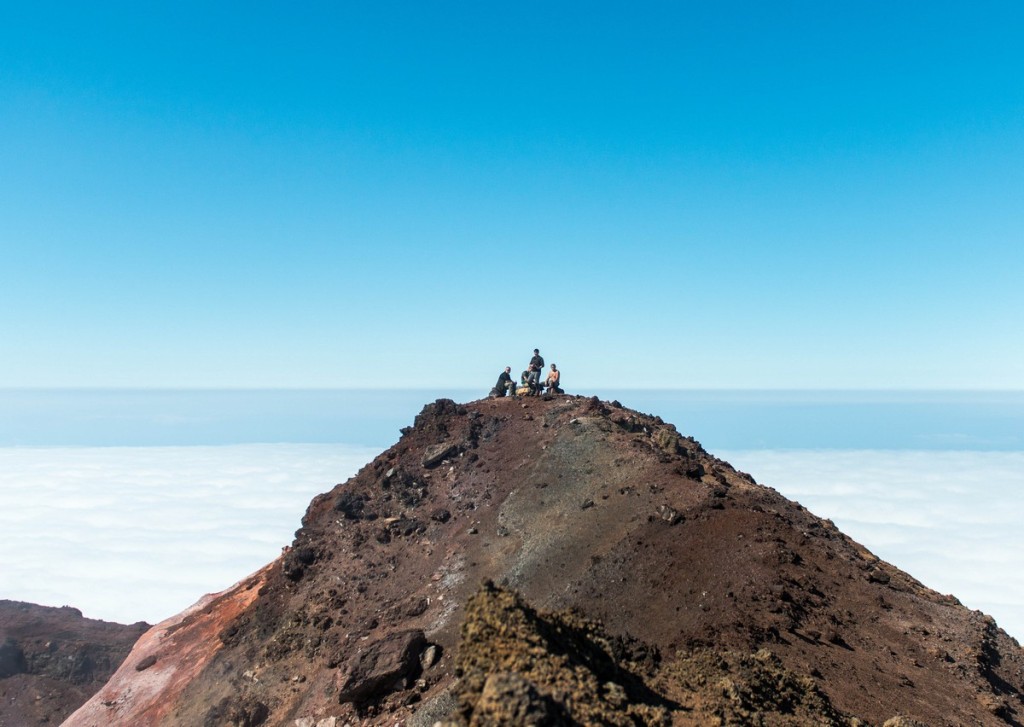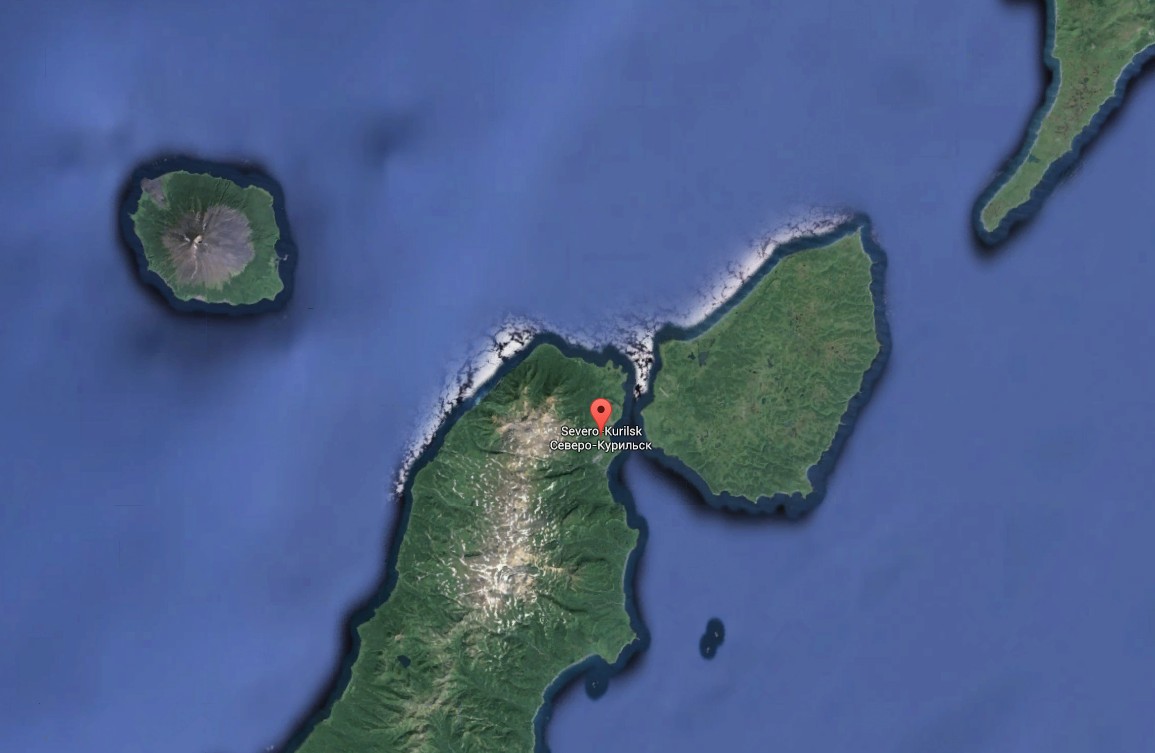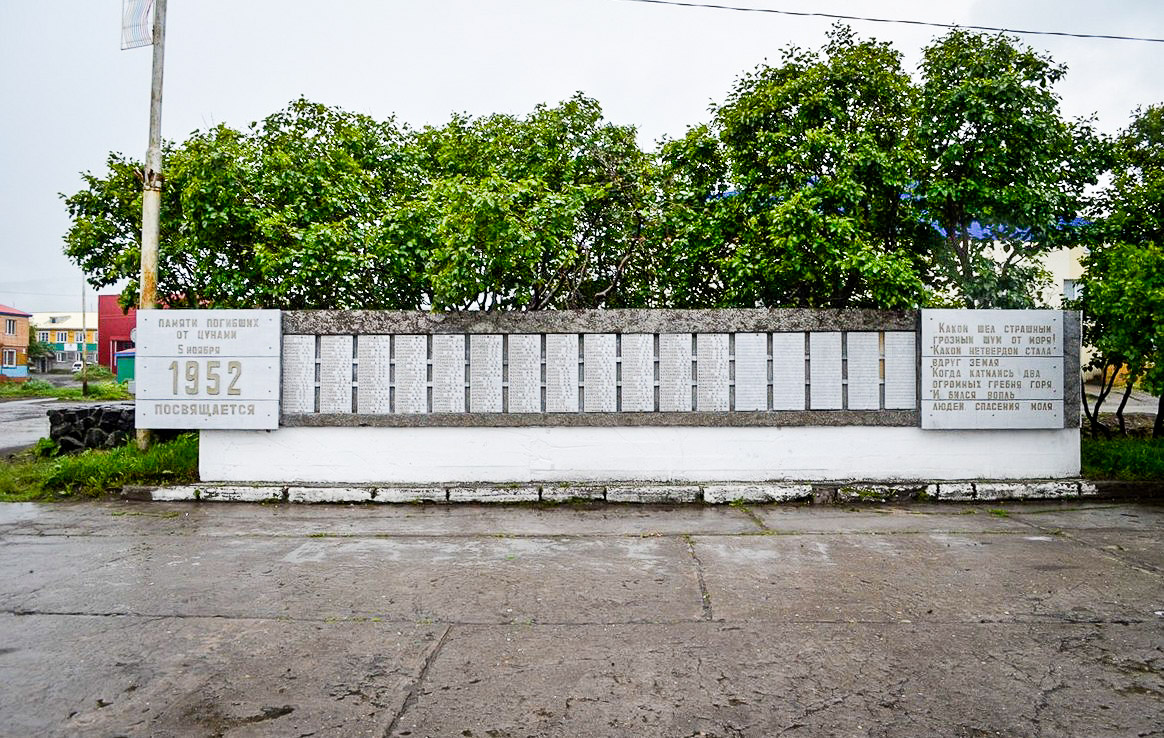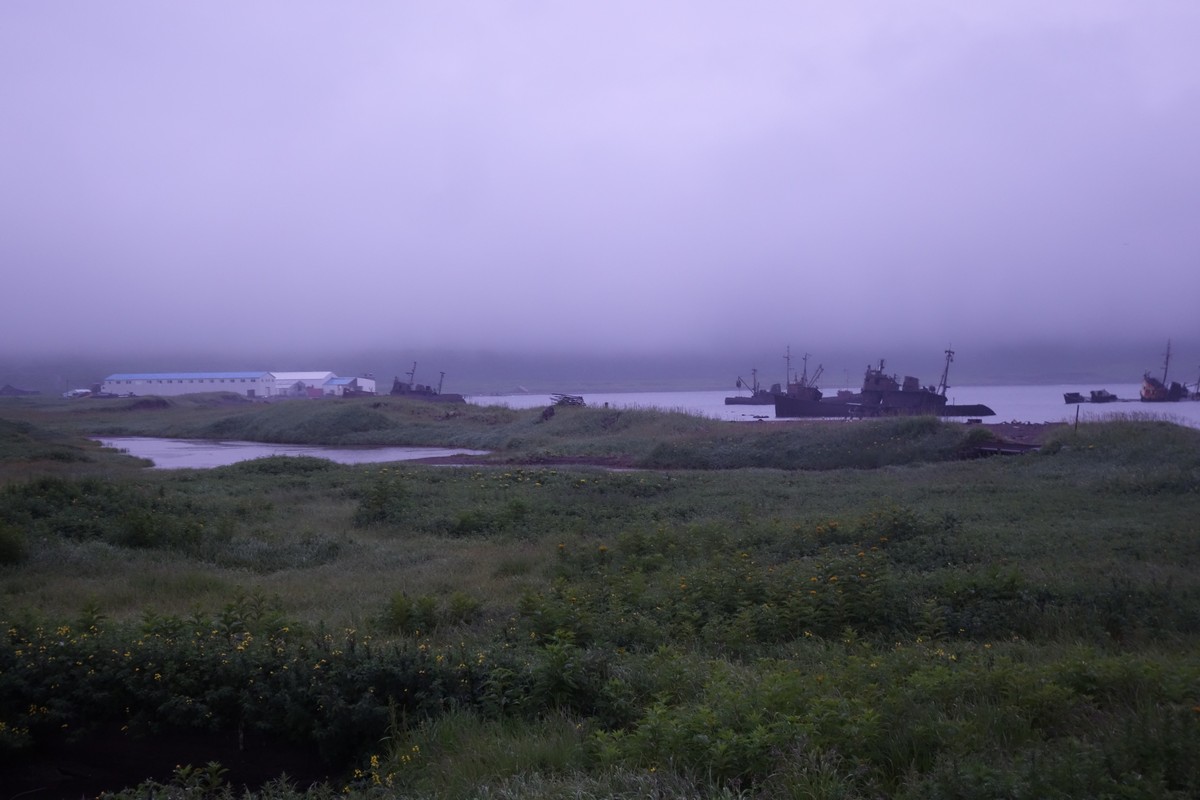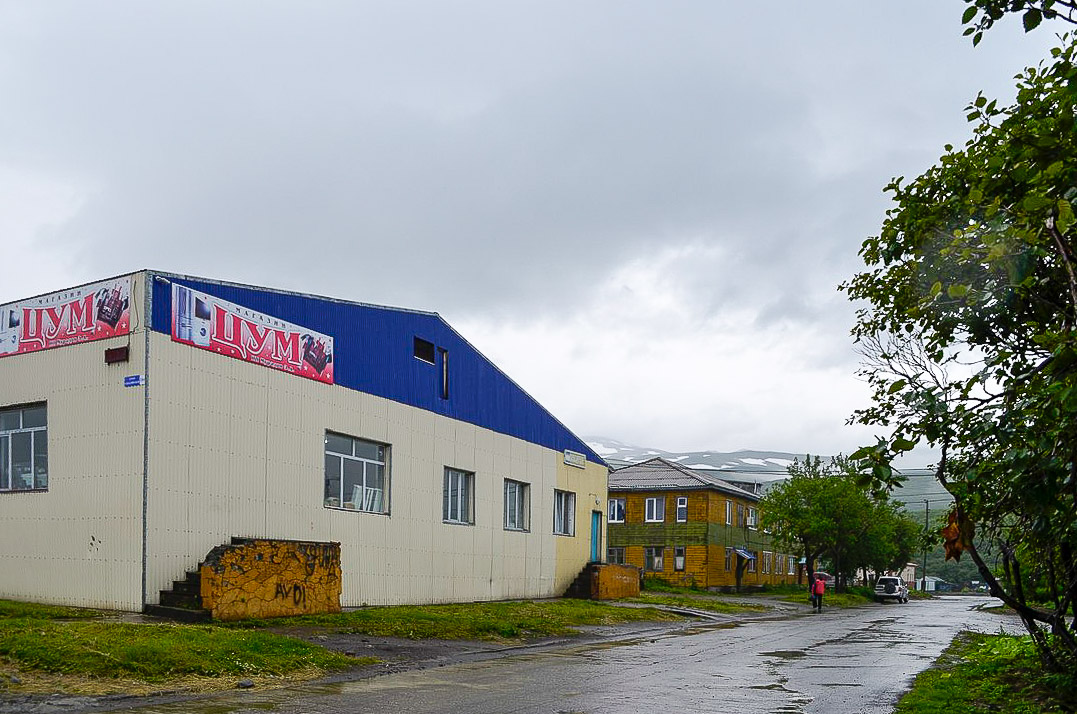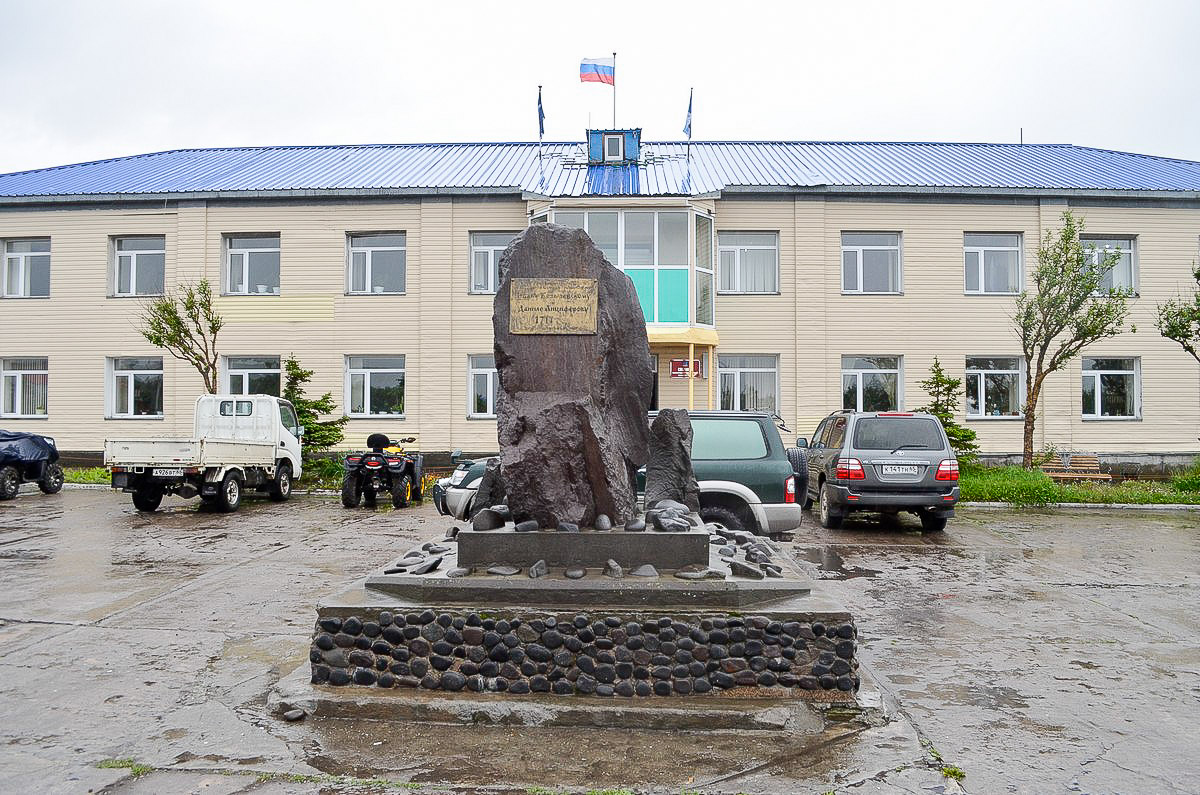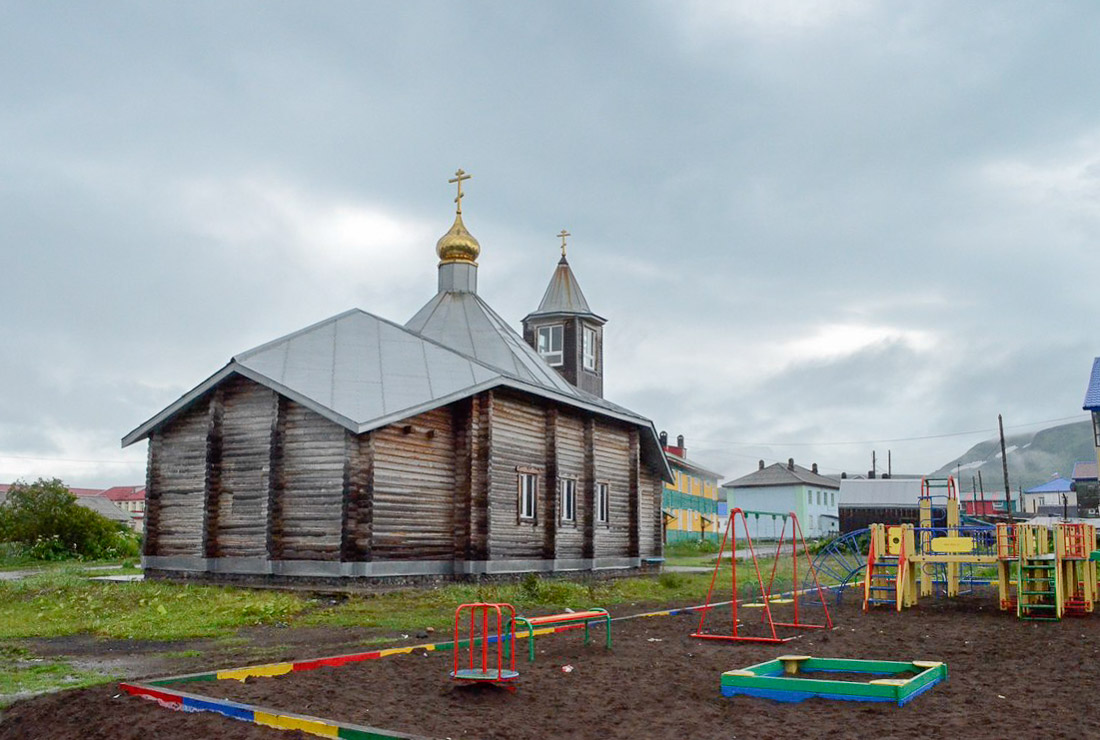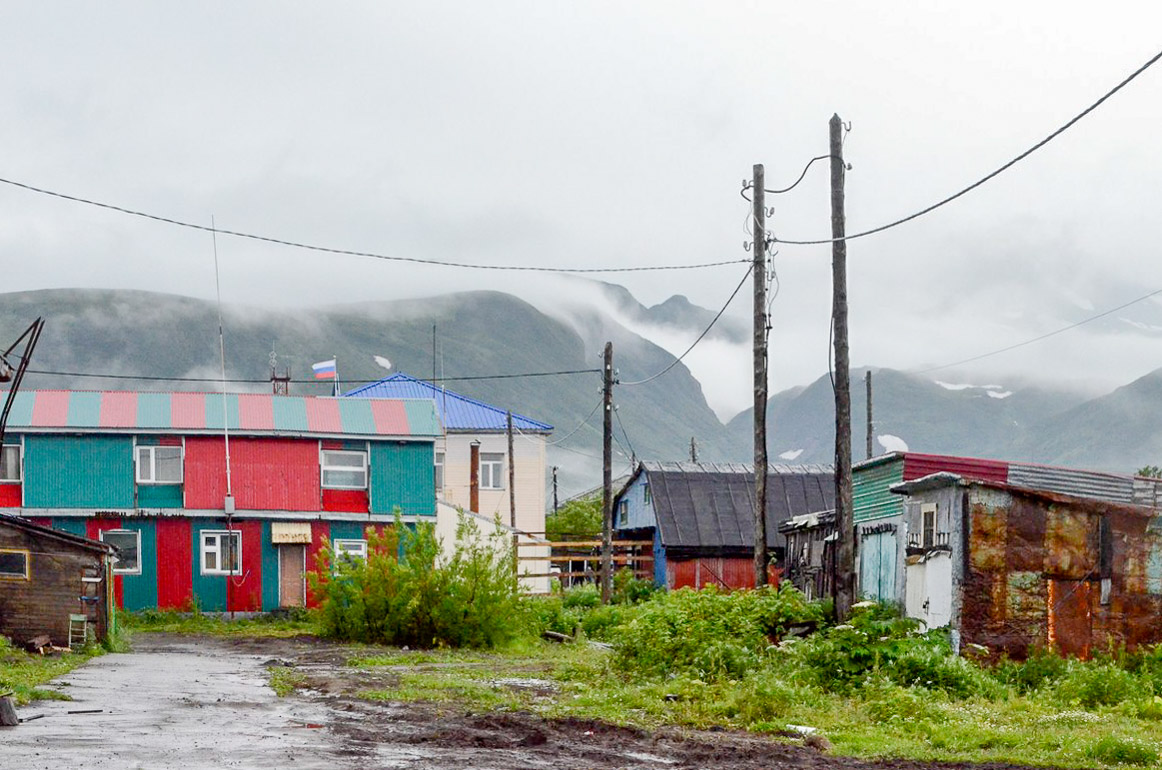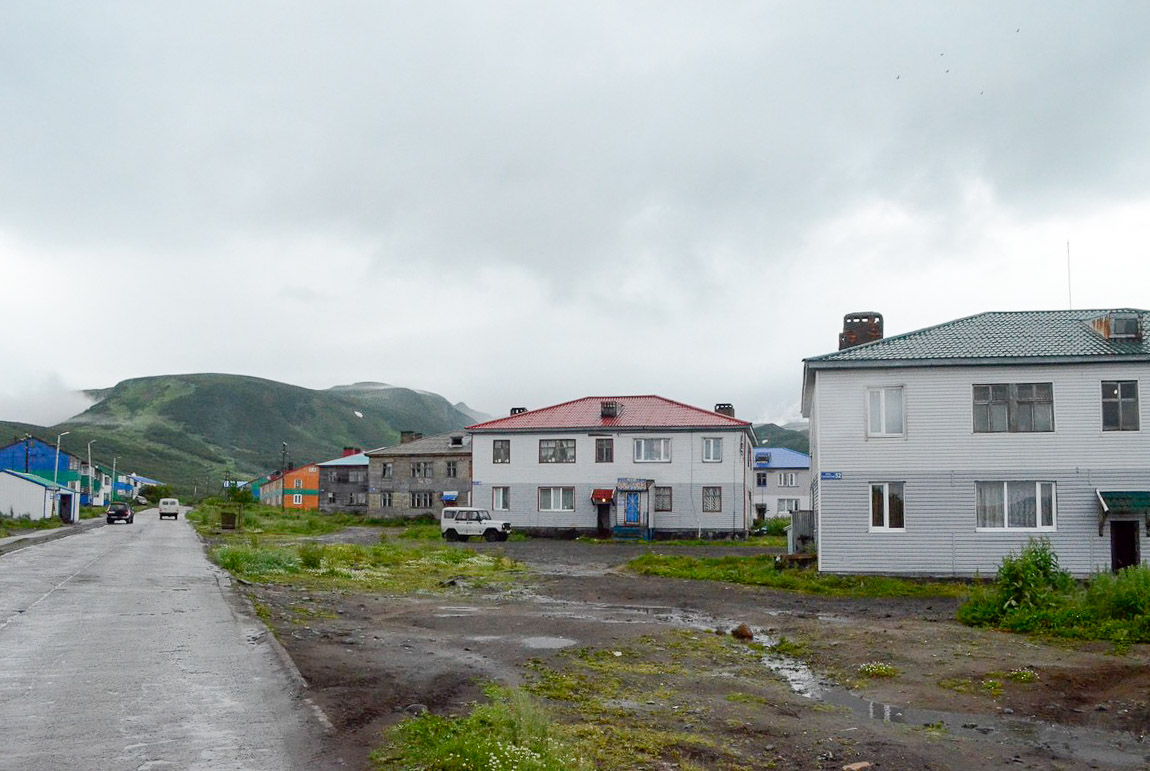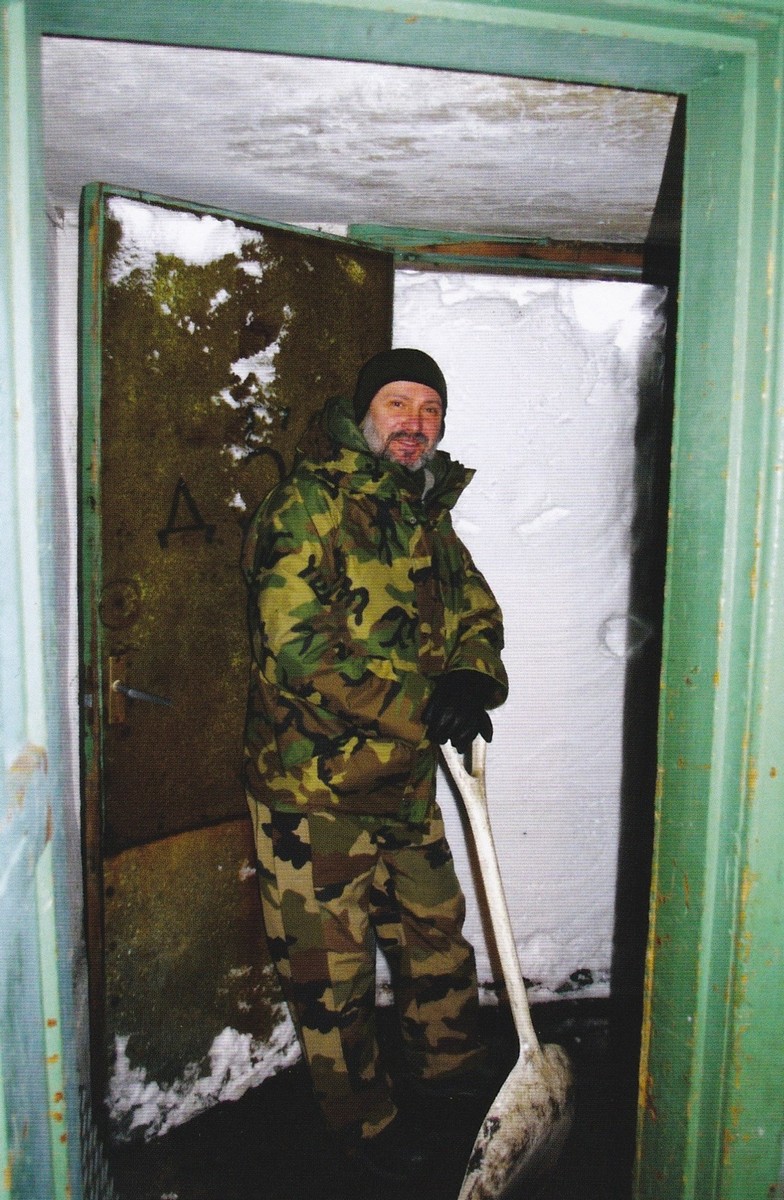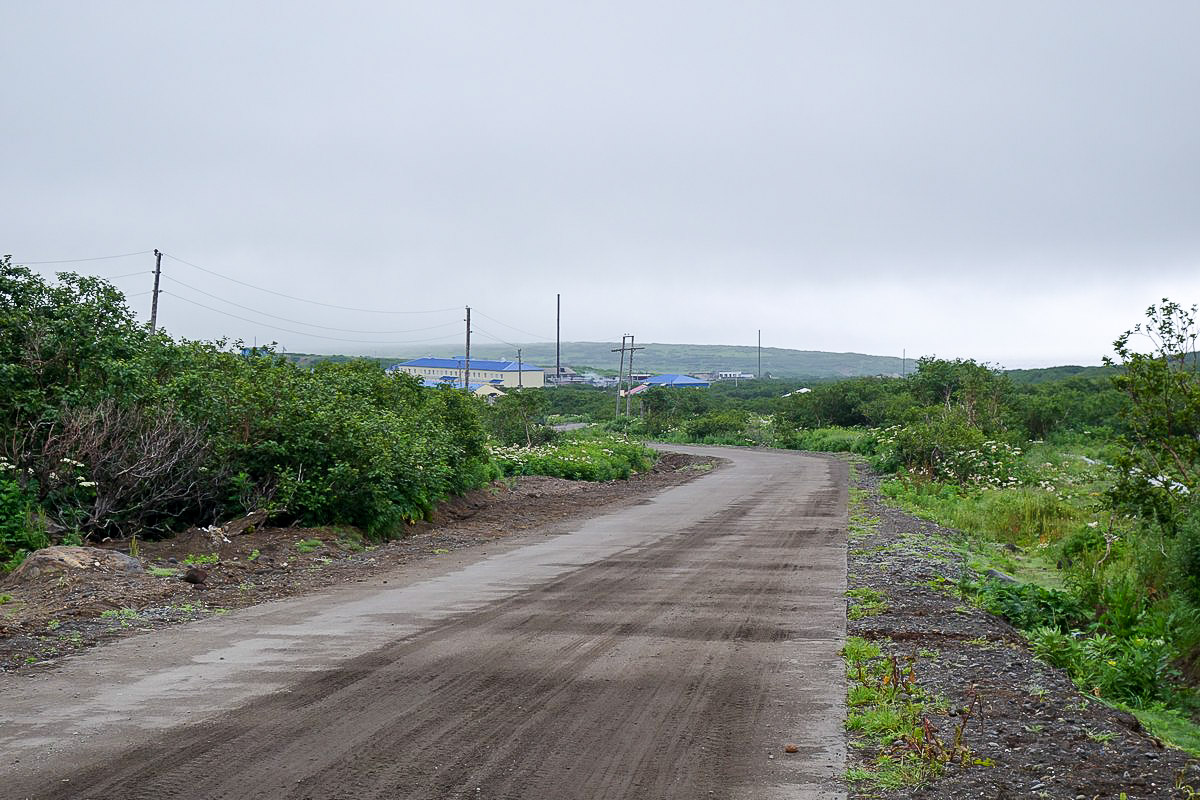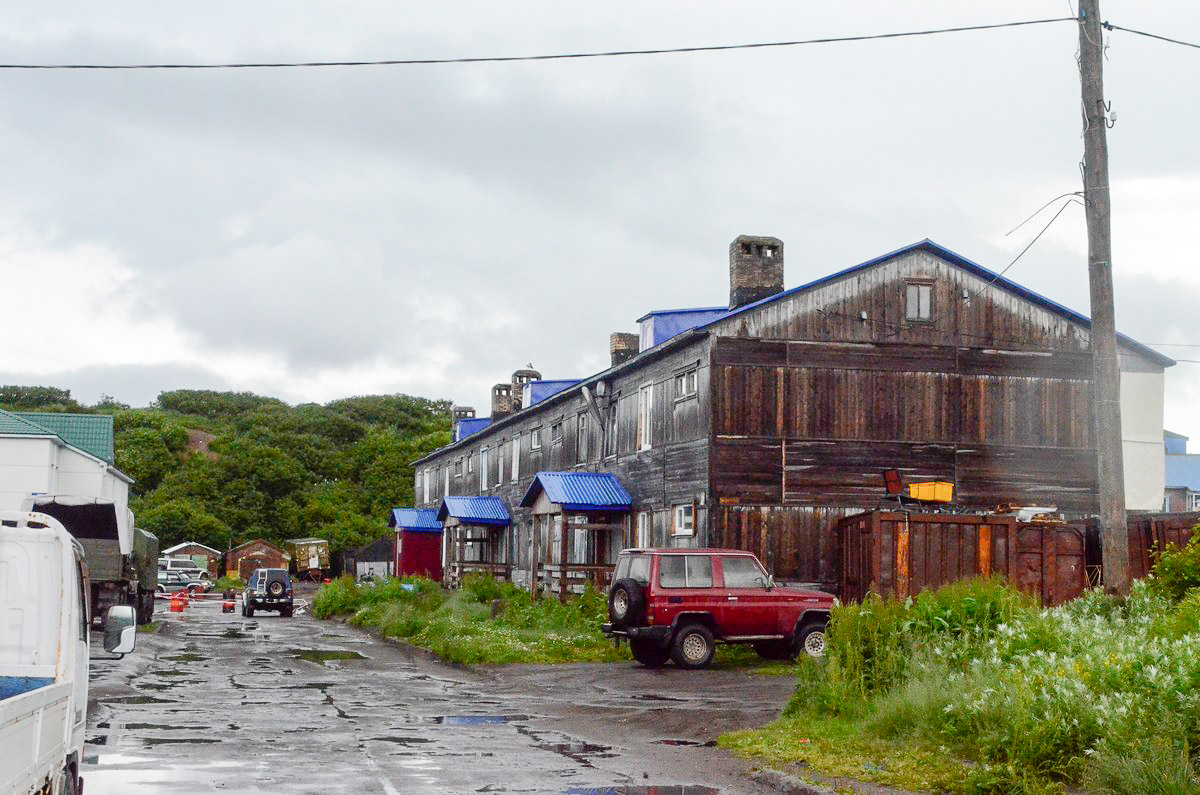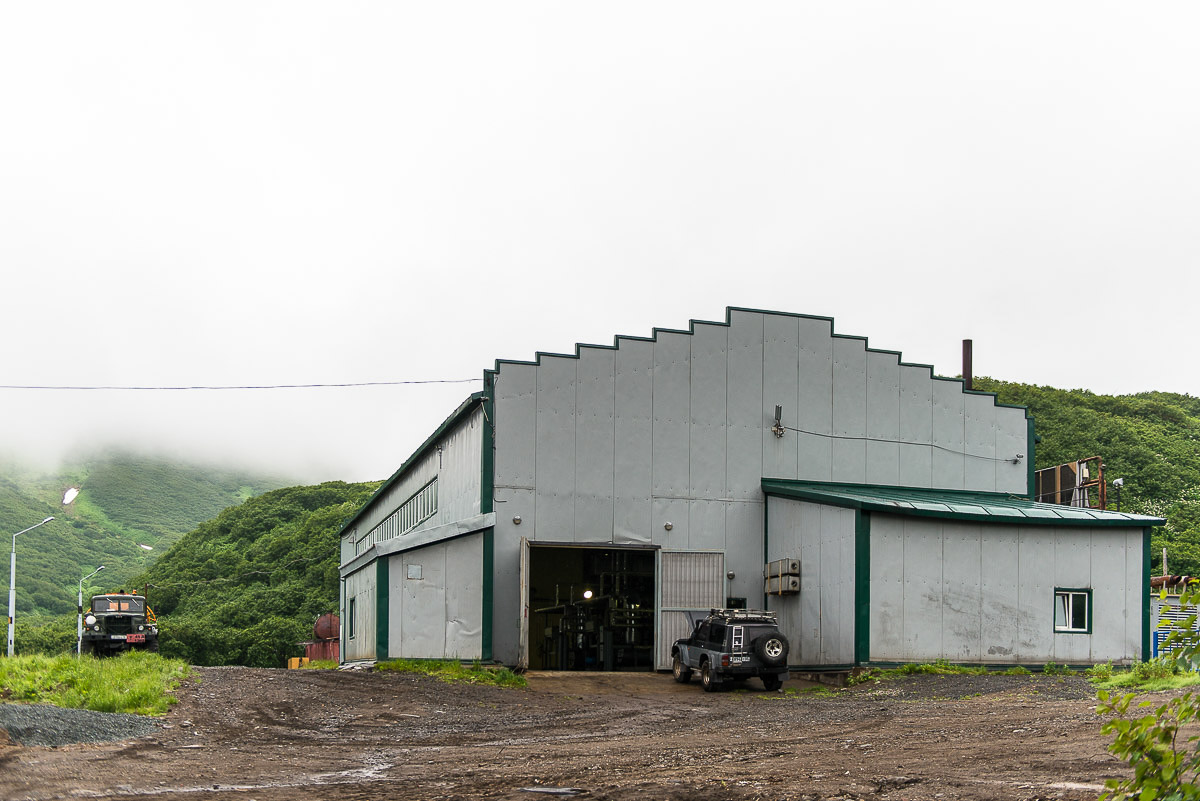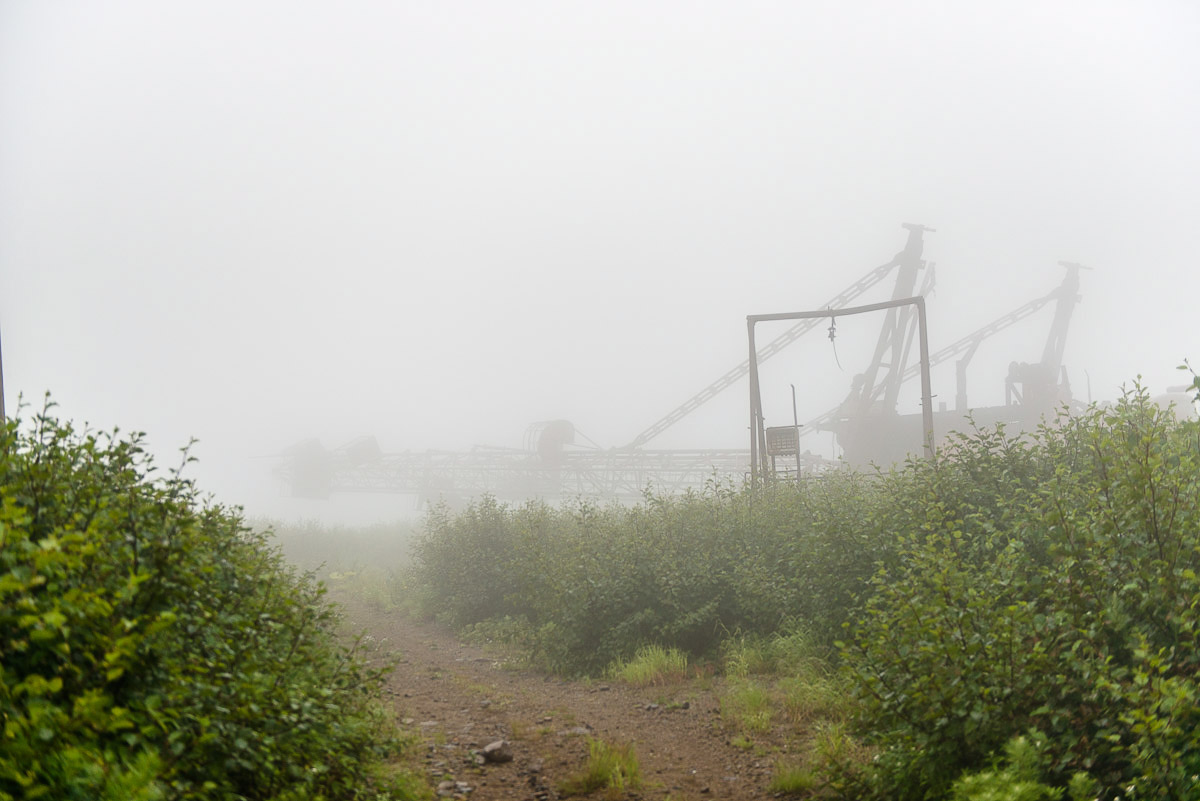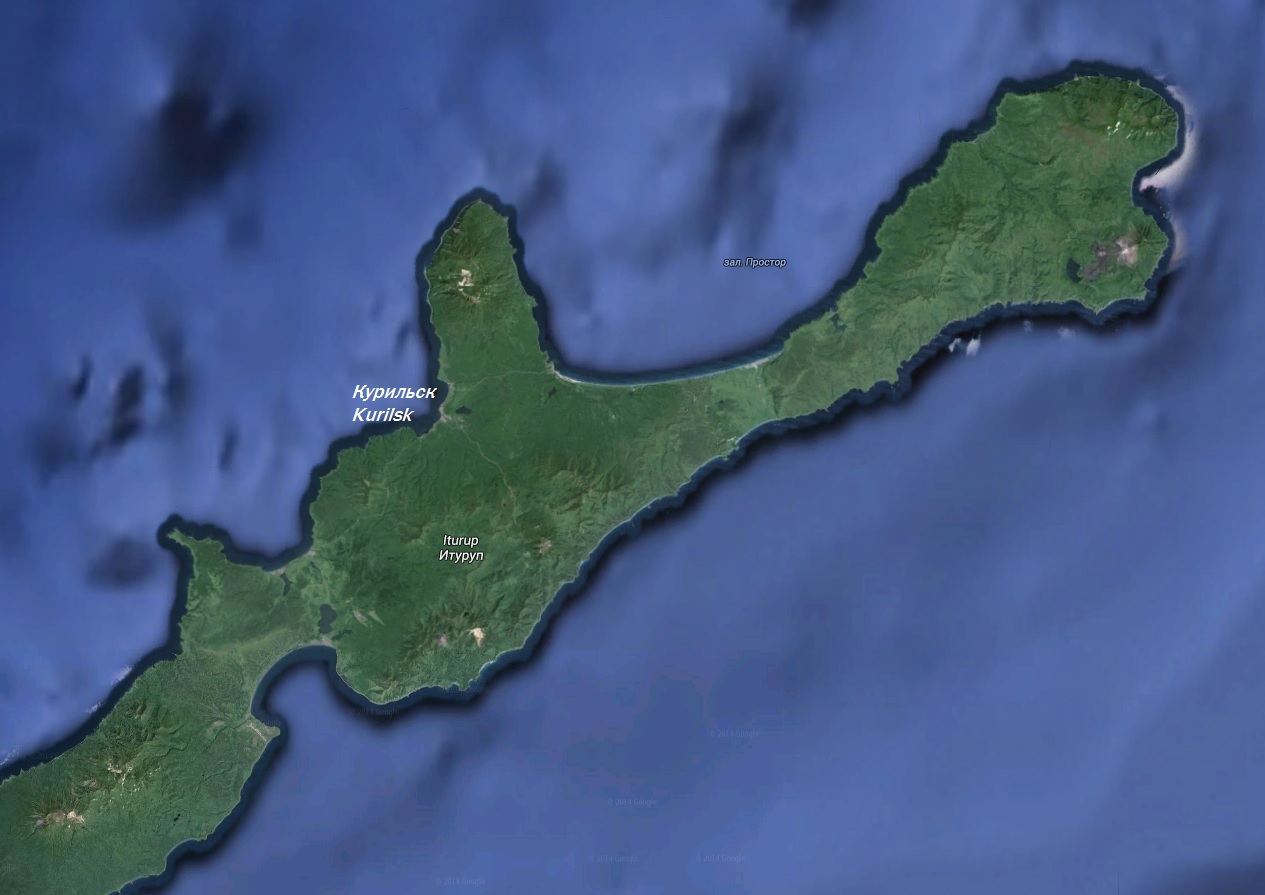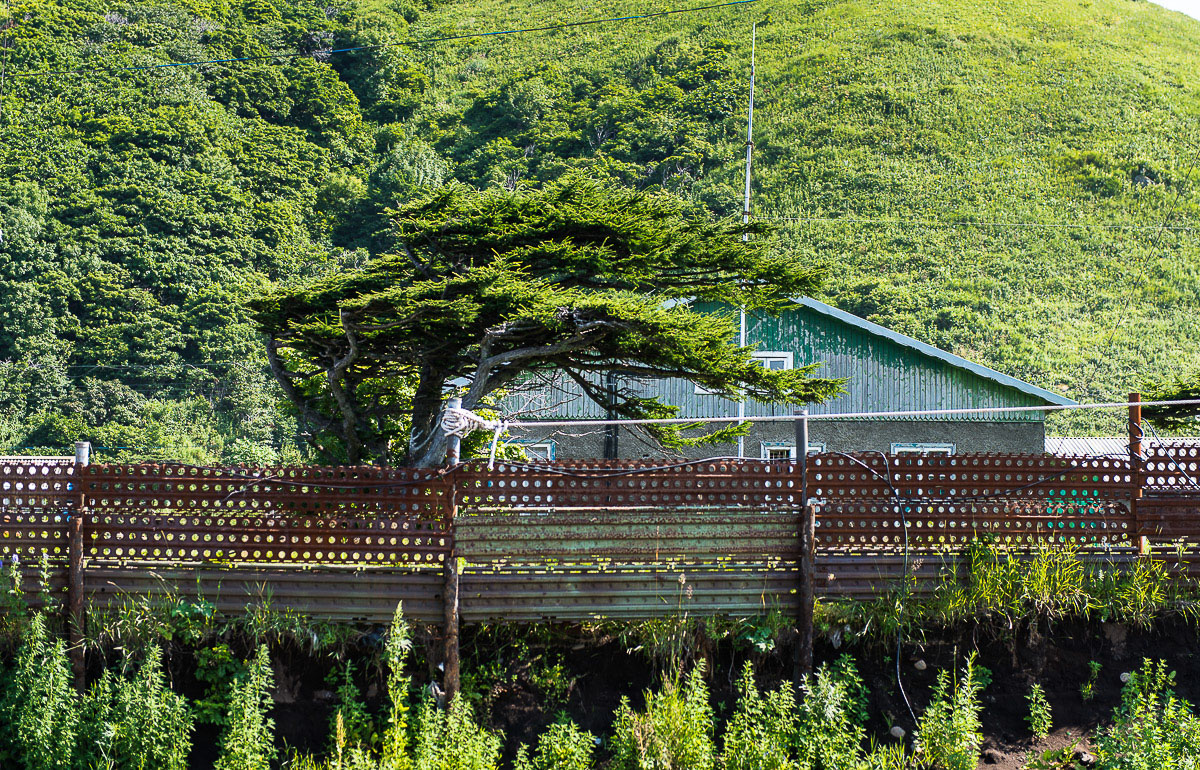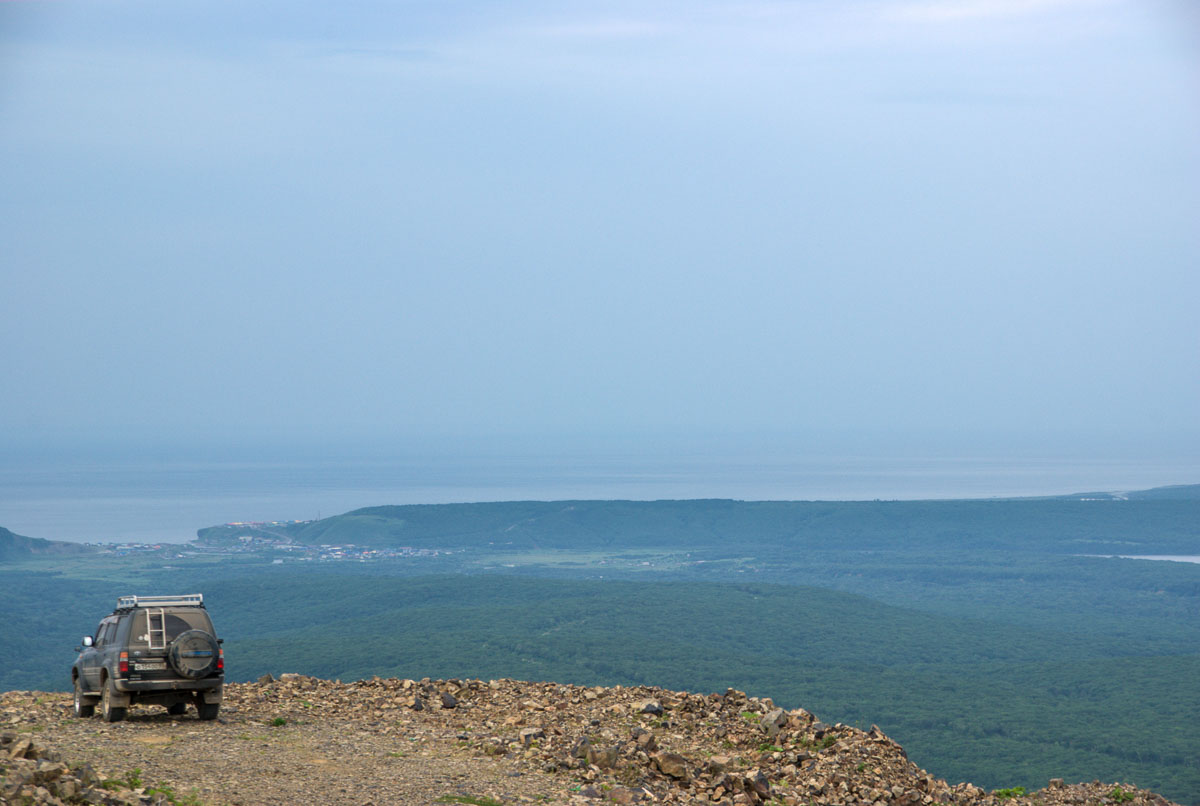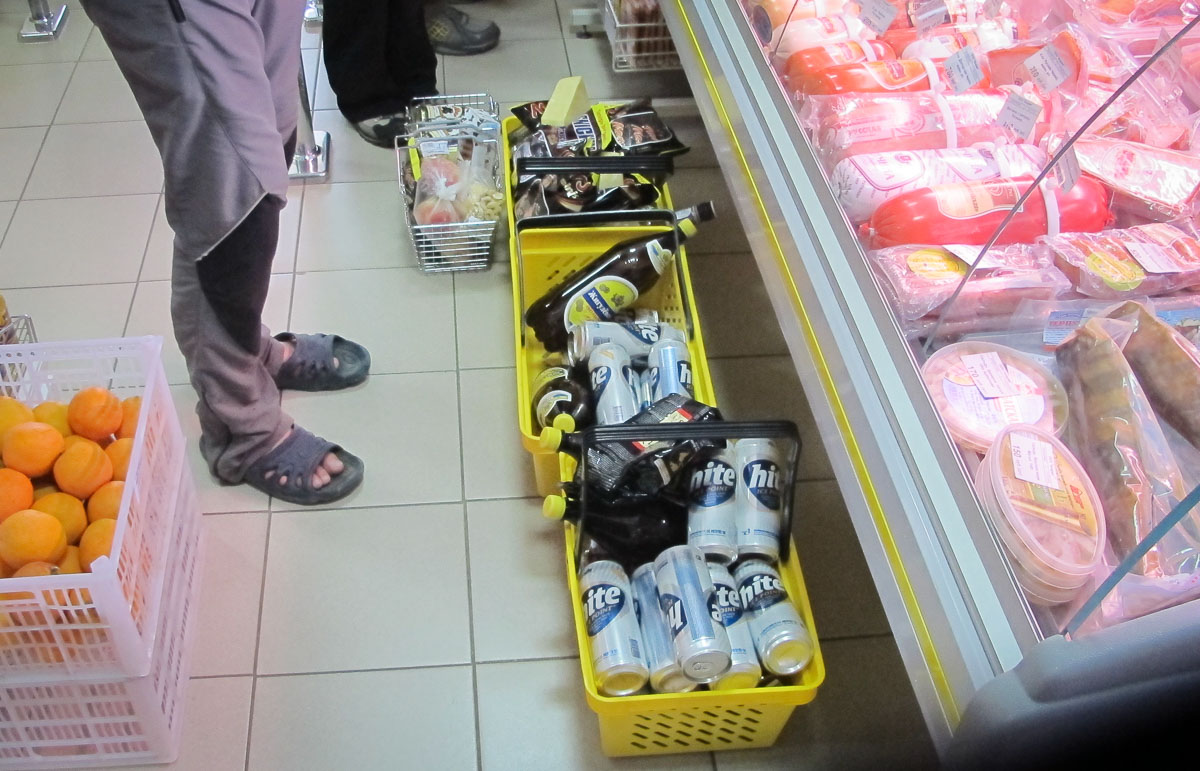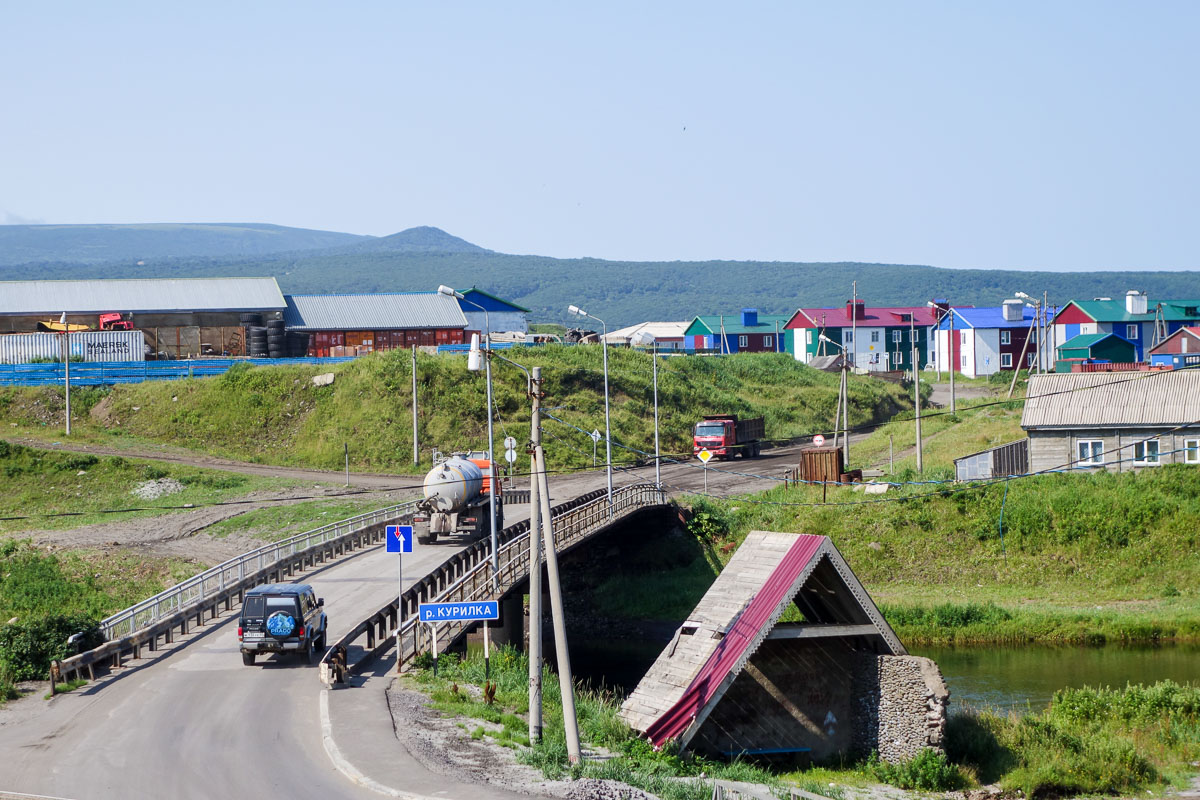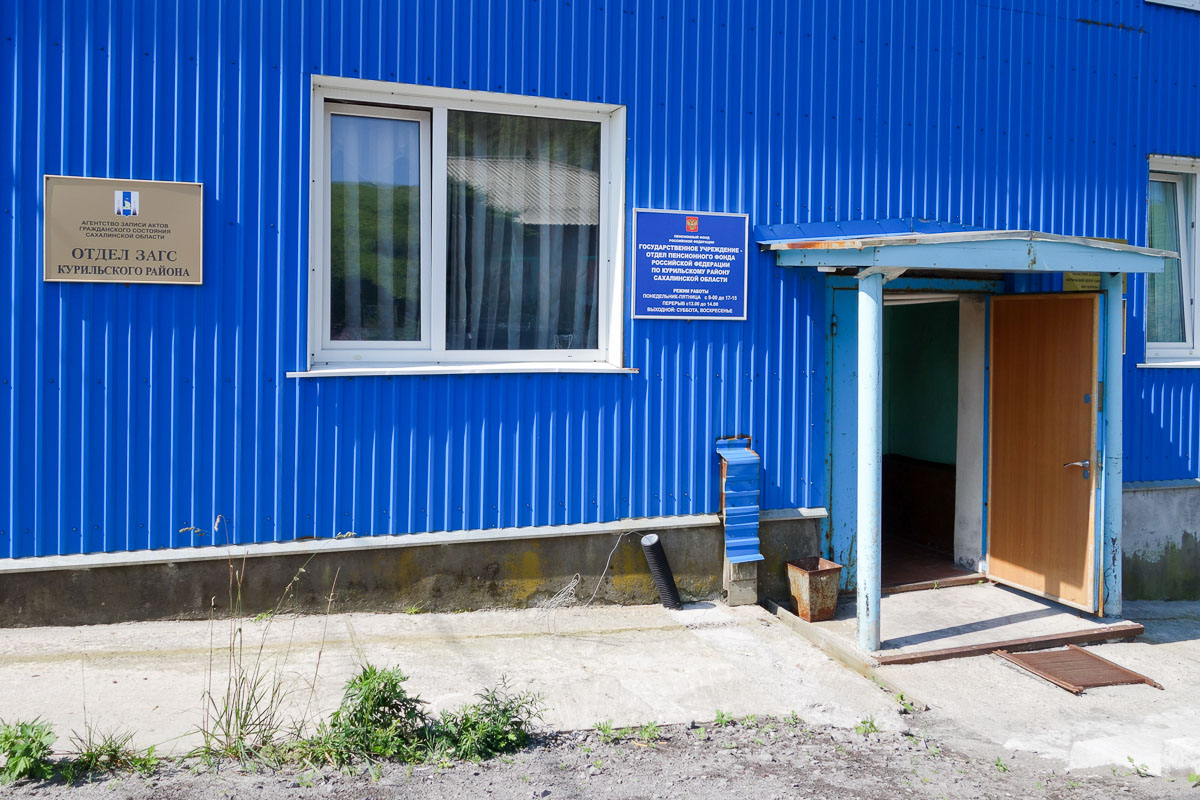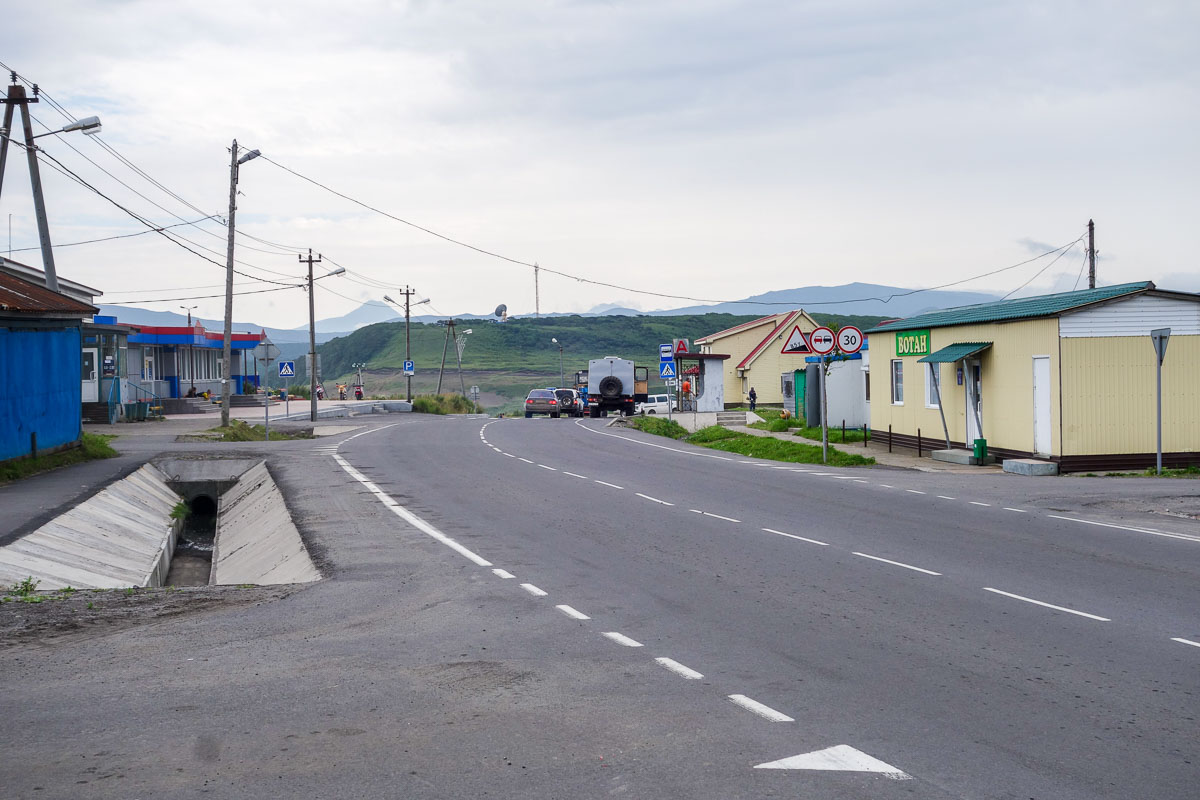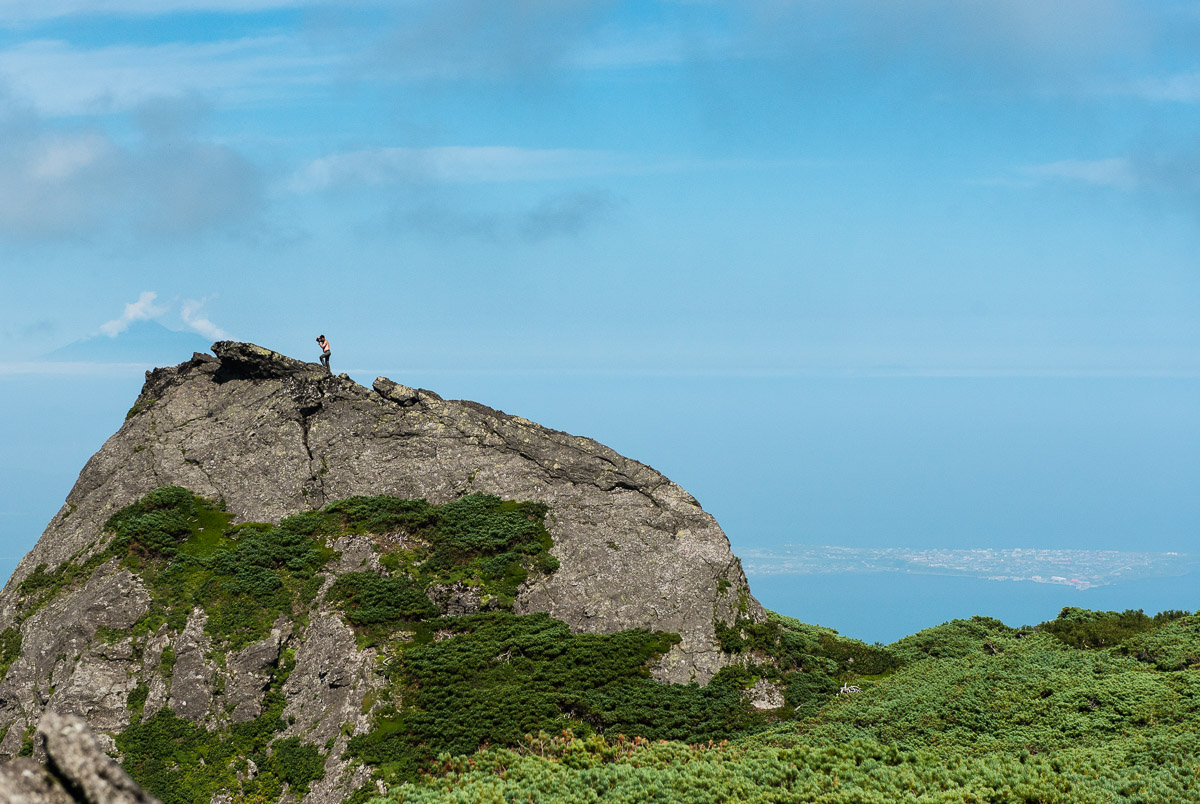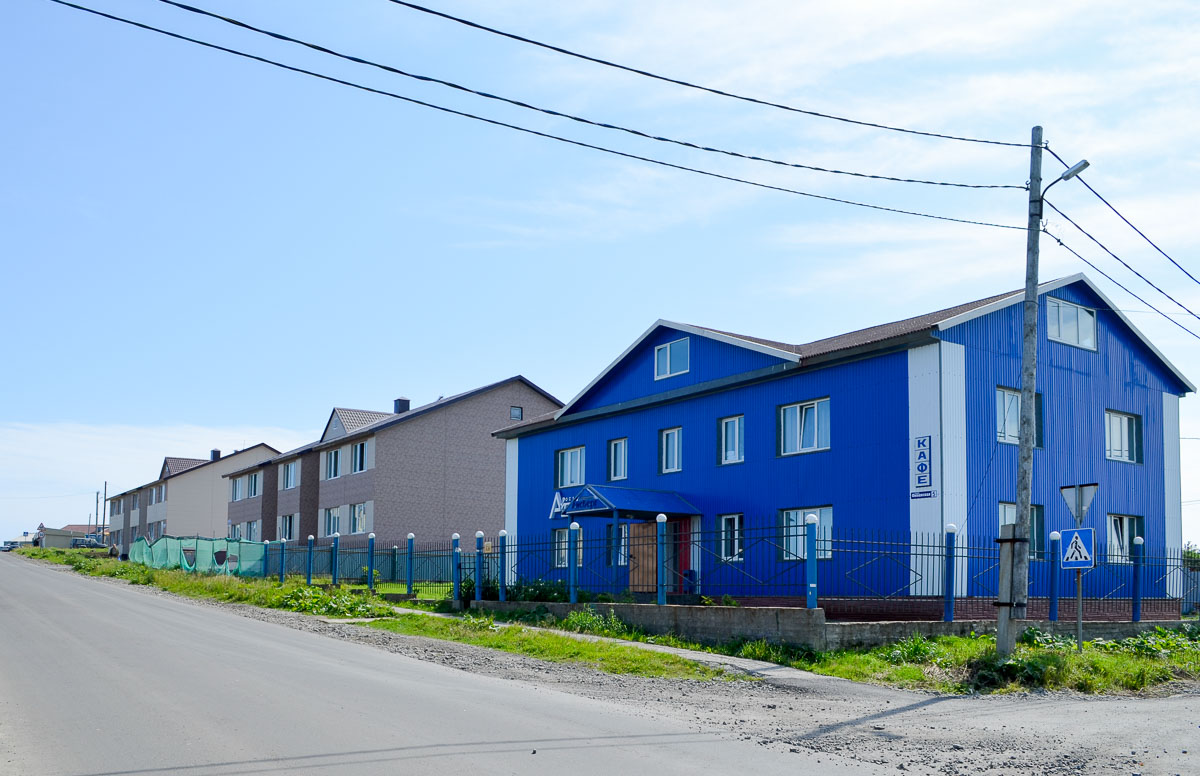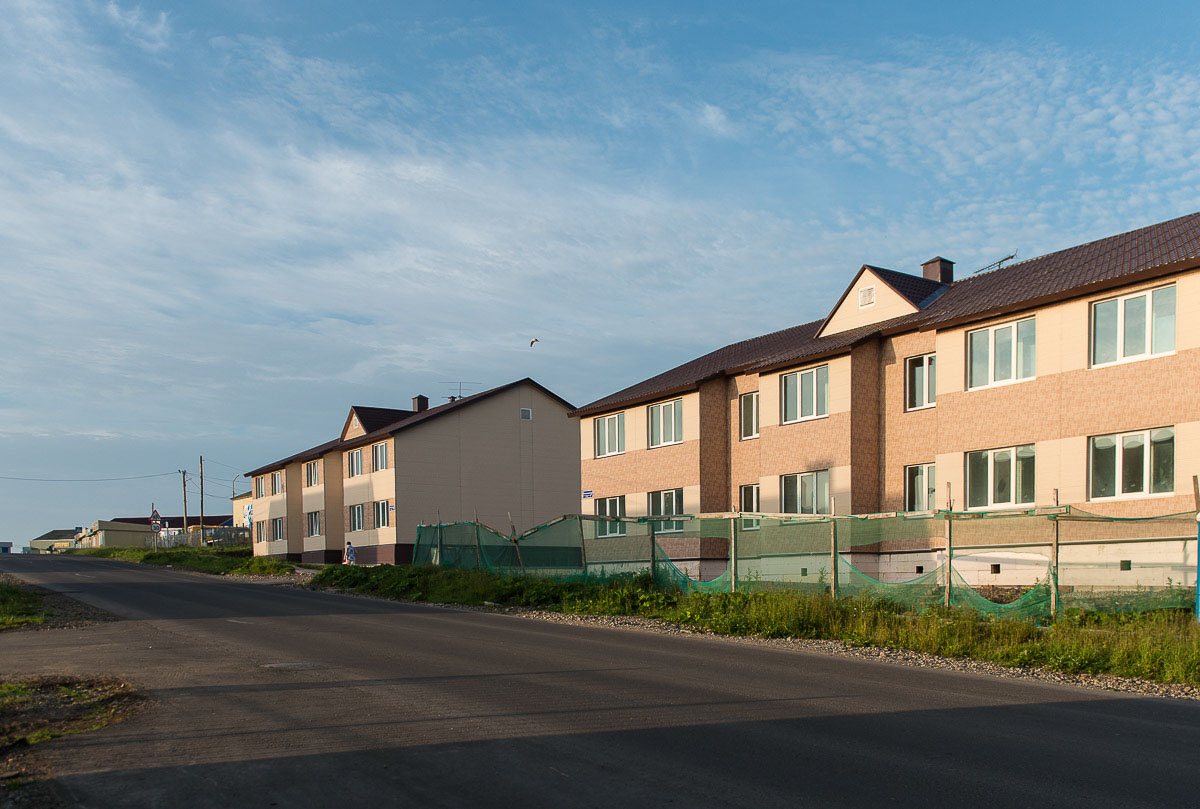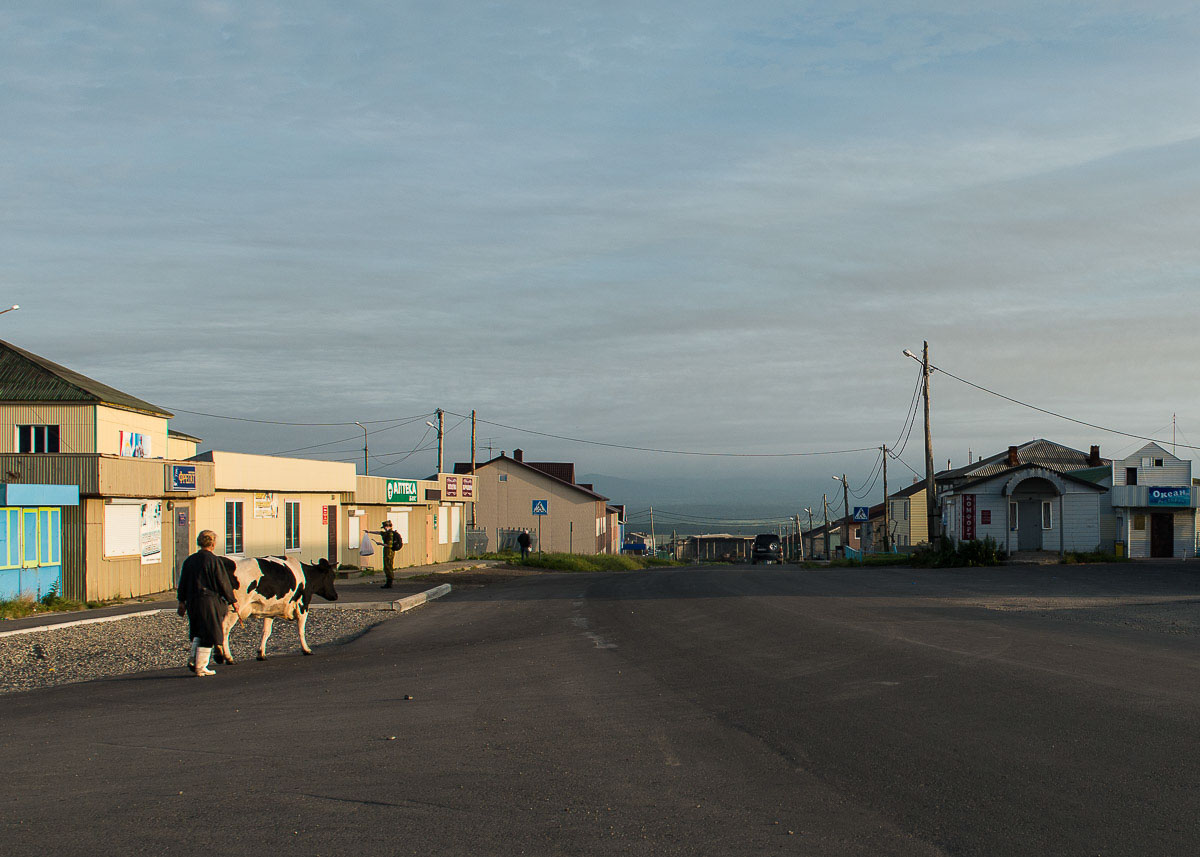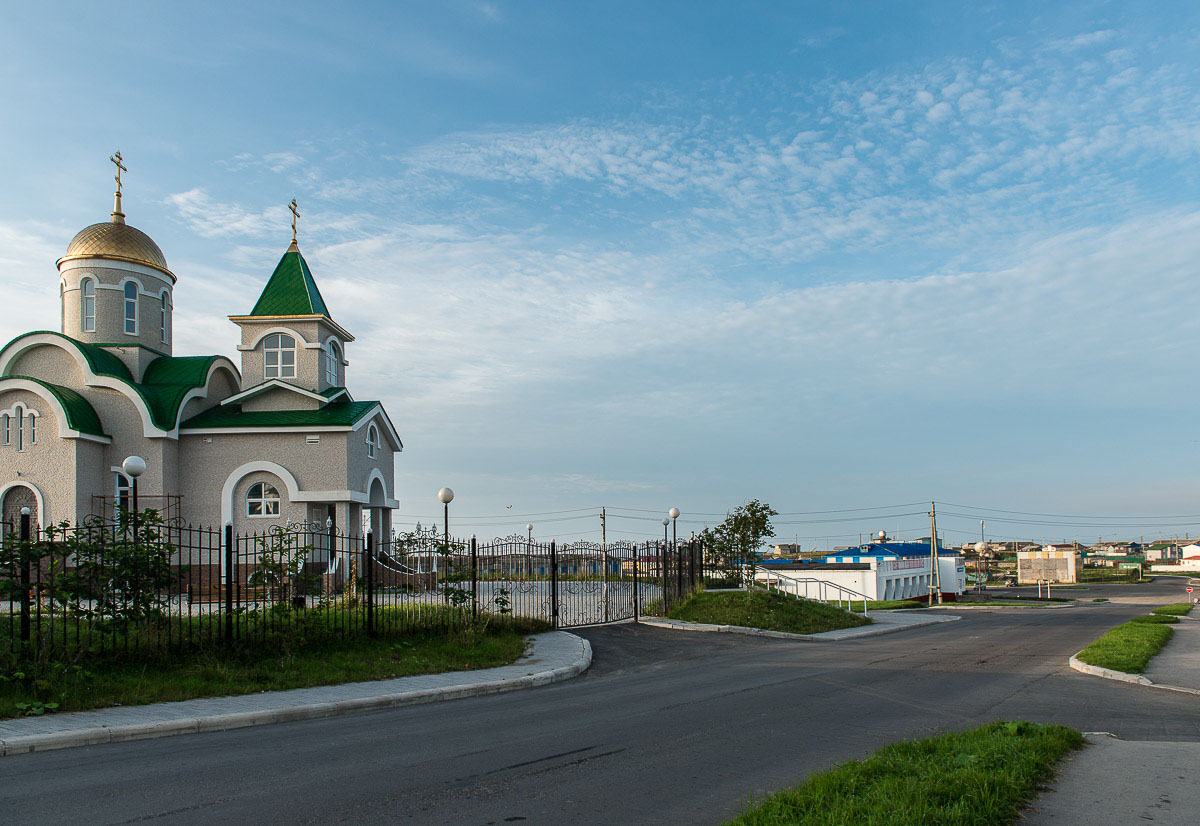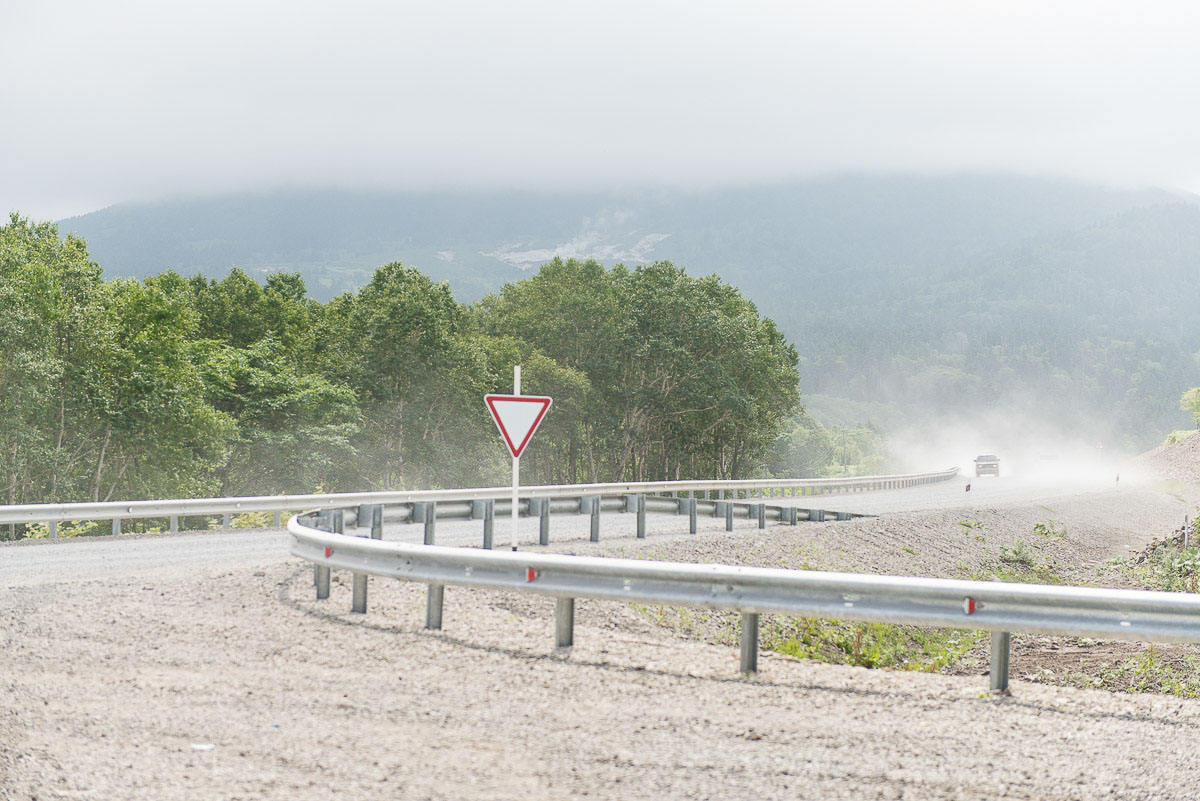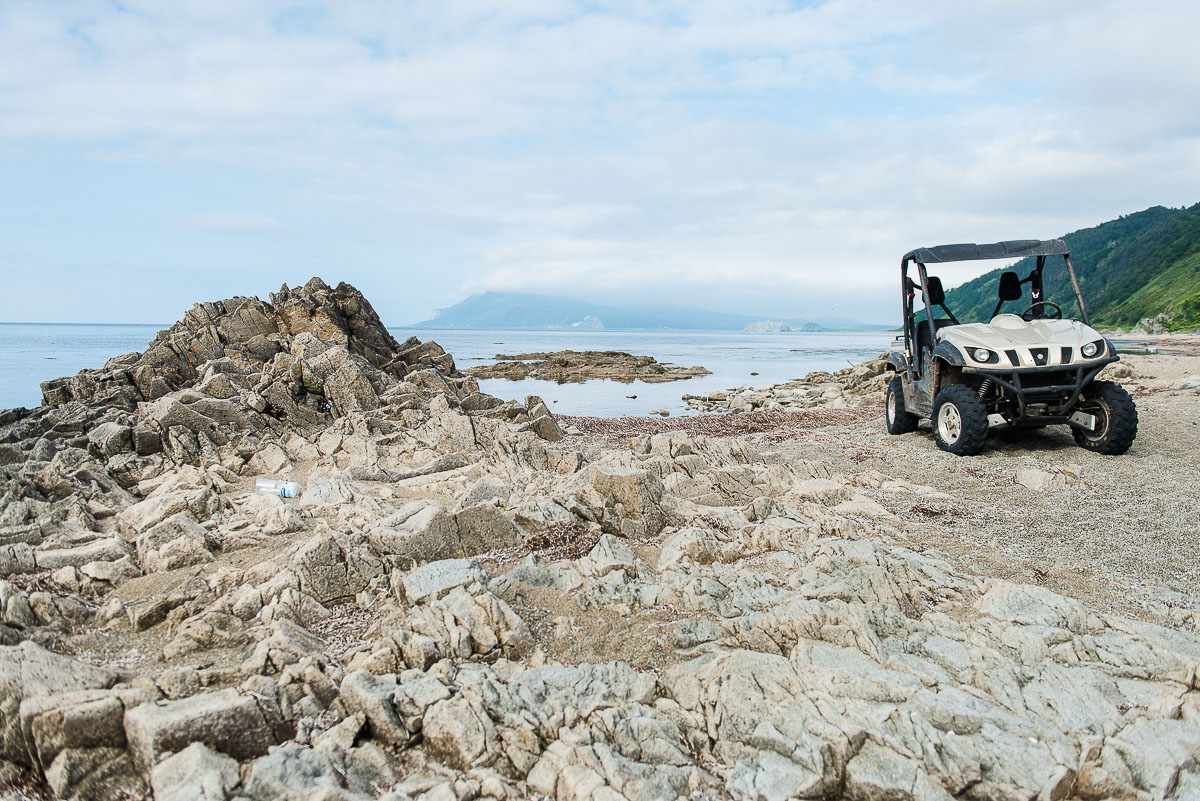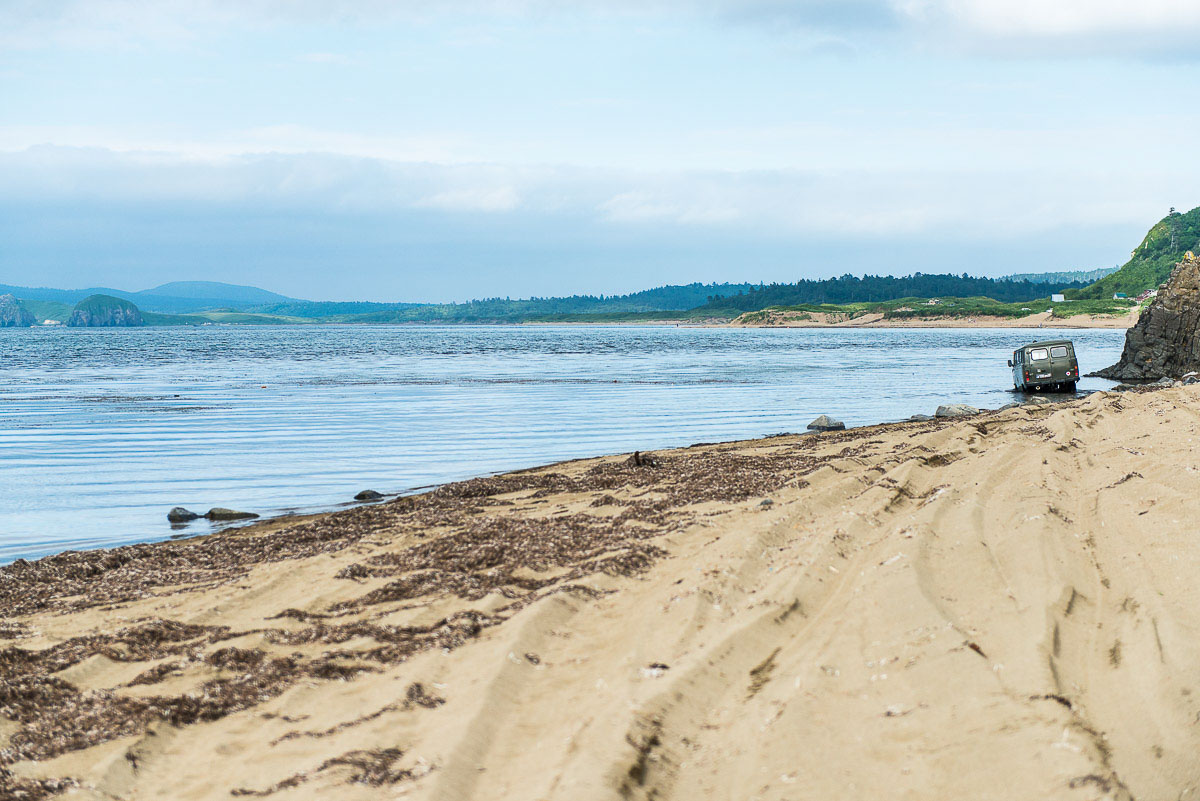October 31, 2014
The three Kurilsks of the Kurils – your guide.
The Kuril Islands are bleak – plain and simple. Extreme weather, poor communications with the continent, a 100% mark-up on all imported goods (and just about all goods are imported from mainland Russia), and a constant threat of natural disasters such as volcano eruptions, earthquakes and tsunami!
It takes a tough individual to survive here; an even tougher individual to love the place. However, there are things to love about it; you just need to know where to look…
The total land mass of all the Kurils is slightly less than that of Israel or Slovenia, or about half the size of Belgium. However, its population is only around 20,000, half of which lives in three towns: (i) Severo-Kurilsk (North-Kurilsk), (ii) Kurilsk, and (iii) Yuzhno-Kurilsk (South-Kurilsk). All very logical.
Surprisingly, the first two have the official status of town, yet their populations combined are smaller than that of the third, which is officially deemed an ‘urban type settlement’. (Logical?) There are also a few tiny hamlets plus seasonal fishing villages which come to life in the summer after hibernating through the winter.
So what’s it like living on the Kuril Islands?
Well, I haven’t lived there, but I imagine it wouldn’t be easy – especially for those used to the modern urban lifestyle with just about everything at their fingertips. Also, we only caught a brief glimpse of life on the Kurils – and during an unusually clement summer at that. All the same, here’s what I can tell you about the place…
Town 1: Severo-Kurilsk, Paramushir island
If travelling north to south along the Kuril chain of islands, your first stop is at Severo-Kurilsk on the island of Paramushir. It’s one night’s travel by boat from Petropavlovsk-Kamchatsky, the capital of the Kamchatka peninsula. It immediately reminded me of the Moscow-Helsinki train: you board in the evening, have a good night’s sleep (or not – and a good night’s partying instead), and you’re there in the morning (did that quite a bit in the late-nineties).
http://instagram.com/p/uN5OfUSIA1/
There are no regular flights since there’s no airport in Severo-Kurilsk. I’m not sure if there are helicopter flights from Kamchatka to the island; that would be pretty expensive anyway. However, there is a helipad; maybe choppers do fly here…
You can’t just turn up at Severo-Kurilsk – or anywhere else on the islands – on a whim. The Kuril Islands are a frontier zone, so you need to obtain a permit from the authorities beforehand. Then, once you arrive, the first thing you do is register with a local official.
So that’s how our Kuril experience began: A stern frontier guard met us at the appointed ‘location X’ on a volcanic beach. He checked all our group one by one against a list, carefully matching the photos and names. Some of the posse got a little irritated at his unwaveringly moody manner, so started to josh and jibe about a bit. Bad idea. With a face bereft of any emotion whatsoever, the officer curtly uttered, “Spare me the sarcasm,” and gave us the kind of look that told us we’d better comply!
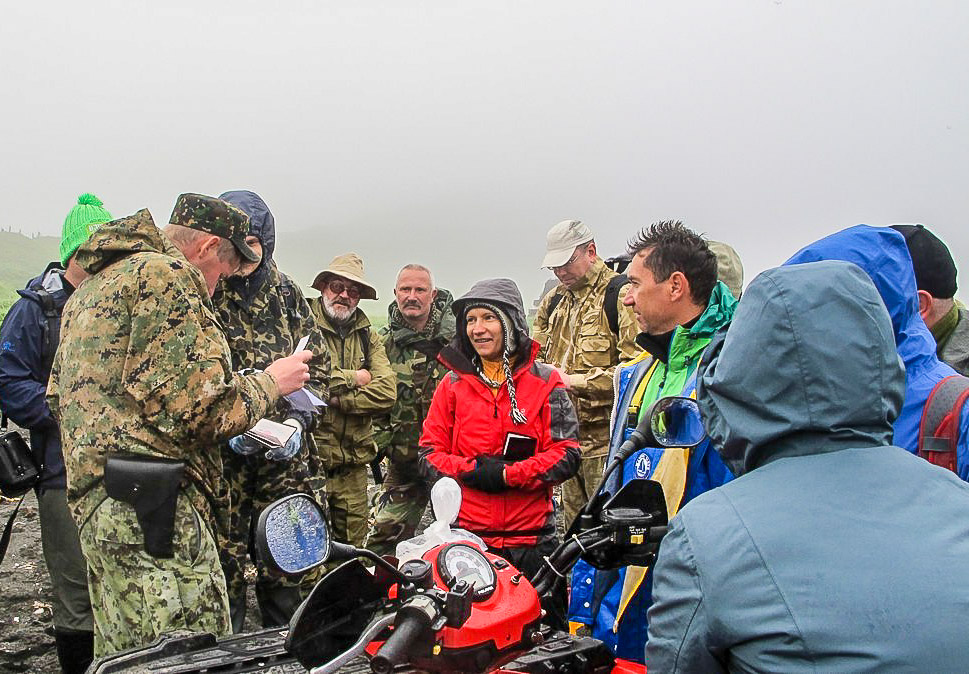 The photo’s quite old I’m afraid; it is me, honest :)
The photo’s quite old I’m afraid; it is me, honest :)
All lists, passports and faces matched up, the formalities were promptly completed and we boarded a bus and headed into town.
It would appear that fate destined this day to be miserable for us. For not long after the surly border guard’s warm welcome, the first thing we found out about Severo-Kurilsk was that it sadly suffered a tragic natural disaster 60+ years ago. Alas, the town was originally founded on the (Pacific) ocean side of the island. Bad plan. In 1952, a tsunami washed the town away, killing nearly half its population. The tragedy was kept secret as per Soviet tradition, only to become declassified in the early nineties after CCCP’s fall. After the disaster Severo-Kurilsk was rebuilt at a safer distance from the shore. To this day the memory of the catastrophe lingers on.
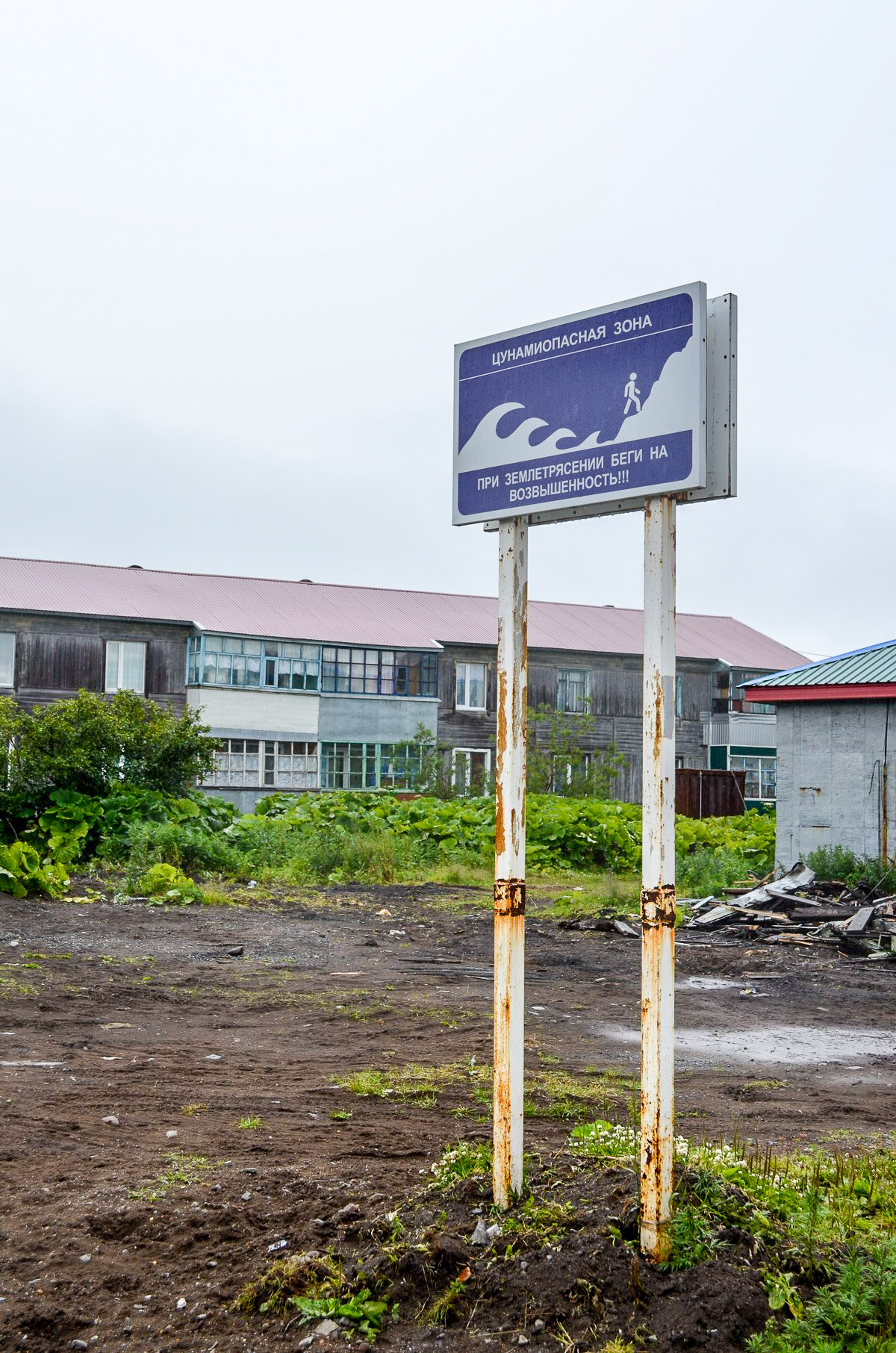 ‘Tsunami hazard area. In case of an earthquake, run to higher ground!'</em
‘Tsunami hazard area. In case of an earthquake, run to higher ground!'</em
The ruined old town left by the tsunami presents a dismal spectacle: skeletal buildings, shipwrecks where the huge surge of water cast them ashore, waterlogged or overgrown streets, abandoned rusty machinery and other unsightly remains left over from the disaster. Everything just left to corrode and decay. No clean-up operation. A distressing sight, especially in twilight under a cold drizzle (it rained on us for most of the day).
The new Severo-Kurilsk is surprisingly welcoming. It’s hardly the liveliest place on earth, but it was much better than I’d expected.
There are shops, a beauty salon, playgrounds, a kindergarten and school, monuments, a church, a newly refurbished outpatient clinic… even a hotel to accommodate not-too-demanding guests. Sure, it’s not got all the creature comforts most of us are used to, but it has got pretty much everything people need to get on with their day-to-day lives.
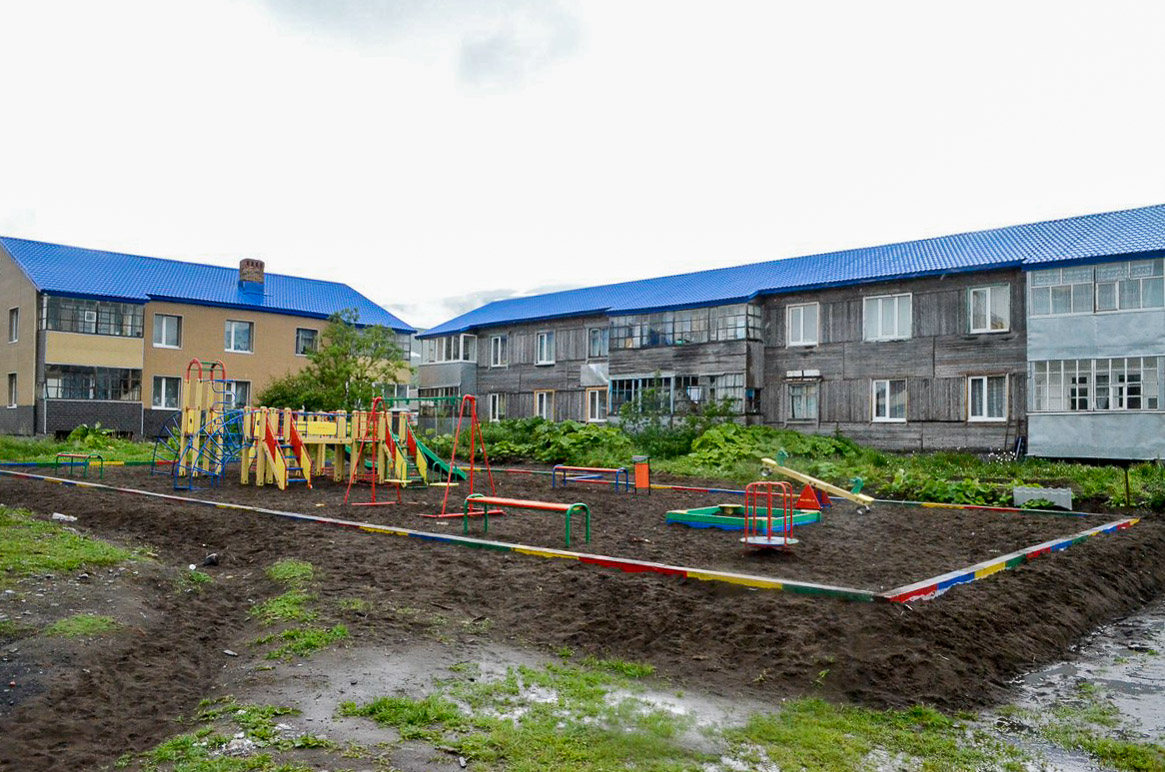 Best get your wellies on, kids :)
Best get your wellies on, kids :)
Some of the housing blocks are newly refurbished; others create a sad impression, again, especially in bad weather (and the weather here seems to be bad most of the time). In fact, it’s not quite clear how people survive the harsh winters here in such rundown barracks; but they do – somehow.
The winters here are not only cold, but also very windy and snowy. For locals, an ordinary winter morning often begins with a healthy and inescapable exercise regime: to clear out the snow from inside their homes. Here’s a photo from L.K’s personal archive. He devoted his entire day to showing us around the island and the Ebeco volcano:
Some roads here are made of reinforced concrete, but most are just dirt tracks. Cars tend to be SUVs that can cope with the poor road situation, and most are old right-hand drive ones imported from Japan – complete with heavy-duty cross-country tires. Quad bikes are also popular.
Surprisingly, there’s a hydroelectric plant here! It’s recently been renovated and they’ve laid a concrete road to it. The facility gives off a quiet hum so it seems to be working.
Paramushir is a volcanic island, and there were once plans to use the natural geothermal energy to heat homes here. In Soviet times there were several attempts to drill wells, but nothing came of them so coal is still the main fuel used for heating on the island.
The island’s volcanism doesn’t do much for the local ecological conditions. Inhabitants say that sulfur evaporations and volcanic ash cause the quality of both the air and water to fall well short of purity standards. I can’t say I noticed though – the constant wind and rain were more of a nuisance to me.
Those inhabitants however, though they’ve quite a bit to be disgruntled about, are exceptionally good-natured. Perhaps it comes from having to get along and help one another in this harsh environment. Folks here have very different lives to folks on the mainland, but I always got the impression they all love the place dearly, are extremely proud to live here, and relish demonstrating that attitude to delicate cubicle drones from Moscow :).
So, what do the locals do for living? There are three main occupations: fishing, fishing, and, for variety, catching fish. Well, there’s also a customs office and a frontier outpost. And it’s the same on all the inhabited Kurils.
At the huge Ebeco volcano there were no other tourists – just us. There’s practically no tourism here. The climate is harsh, the rain is cold, and an fierce wind is forever blowing a gale. And the day of our visit was no exception: we descended the volcano in a rather dazed and shivery state.
Sadly, there was practically no time left for a tour of the town, so my Severo-Kurilsk impressions are scant and blurred. Next time, I think it’ll be a good idea to put up at the ‘Fisherman’s House’ hotel for a couple of days to get a real taste of the genuine Severo-Experience. After all, there are other places to see around here, not just Ebeco.
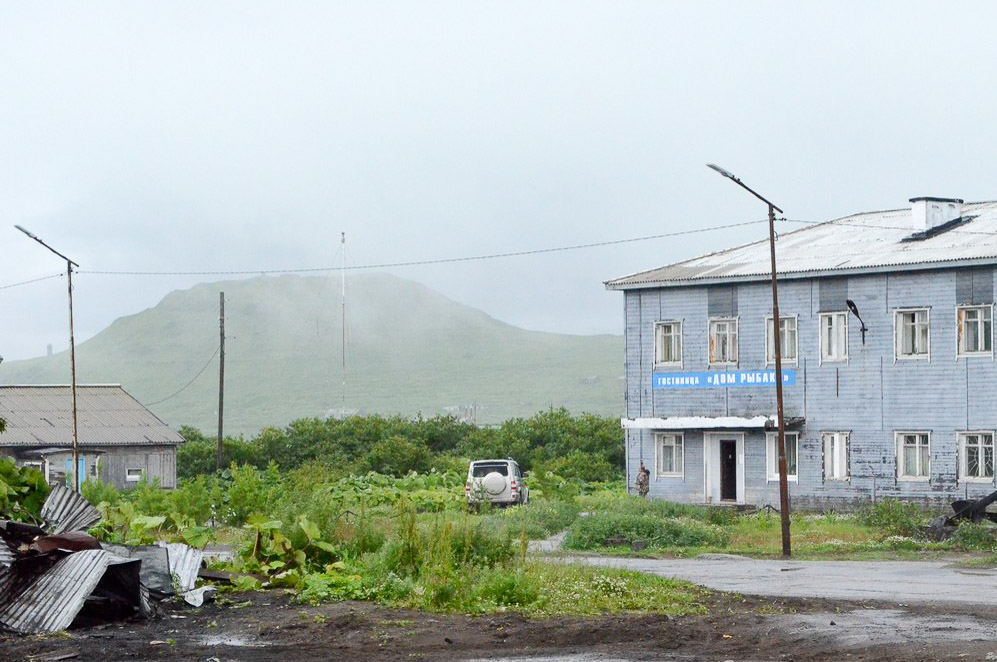 The ‘Fisherman’s House’ hotel. Clearly five-star
The ‘Fisherman’s House’ hotel. Clearly five-star
For example, there’s the neighboring Shumshu island – said to be an incredibly picturesque place (in sunny weather), and the only flat island in the entire Kuril chain.
But no. This time we had to head out to our next Kuril isle. In fact there were quite a few other practically uninhabited Kurils before our next inhabited one several days later: coming up next here…
Town 2: Kurilsk, Iturup island.
Kurilsk – the third-in-size town of the Kuril Islands, situated neatly between Severo-Kurilsk (North) and Yuzhno-Kurilsk (South).
We arrived on Iturup on a real calm, sunny early morning, so we were loving it from the get-go. Things only got better – the first shop we’d seen in 10 days stocked BEER. BEEEER!
LIke Paramushir, Iturup’s economy is mostly all about fishing. However, it has another interesting sideline – in rhenium. Wikipedia says that the world’s only economically viable deposits of the rare metal are to be found here. Hmmm, does that mean that Chile and the USA extract it at a loss then? A less trivial question is why rhenium is still not industrially extracted on Iturup, especially since world production stands at around just 60 tonnes a year and a kilo can reach $10,000. Here on Iturup the Kudryavy volcano discharges all on its lonesome more than a year’s world production. And still no industrial extraction. EH?
The housing here is much like in Severo-Kurilsk: Some houses (especially on the outskirts) seem ready to fall apart; how they keep the heat in during winters I’ll never know. But then downtown it’s all new refurbs, bright colors, and perfect roads and sidewalks – quite the model town.
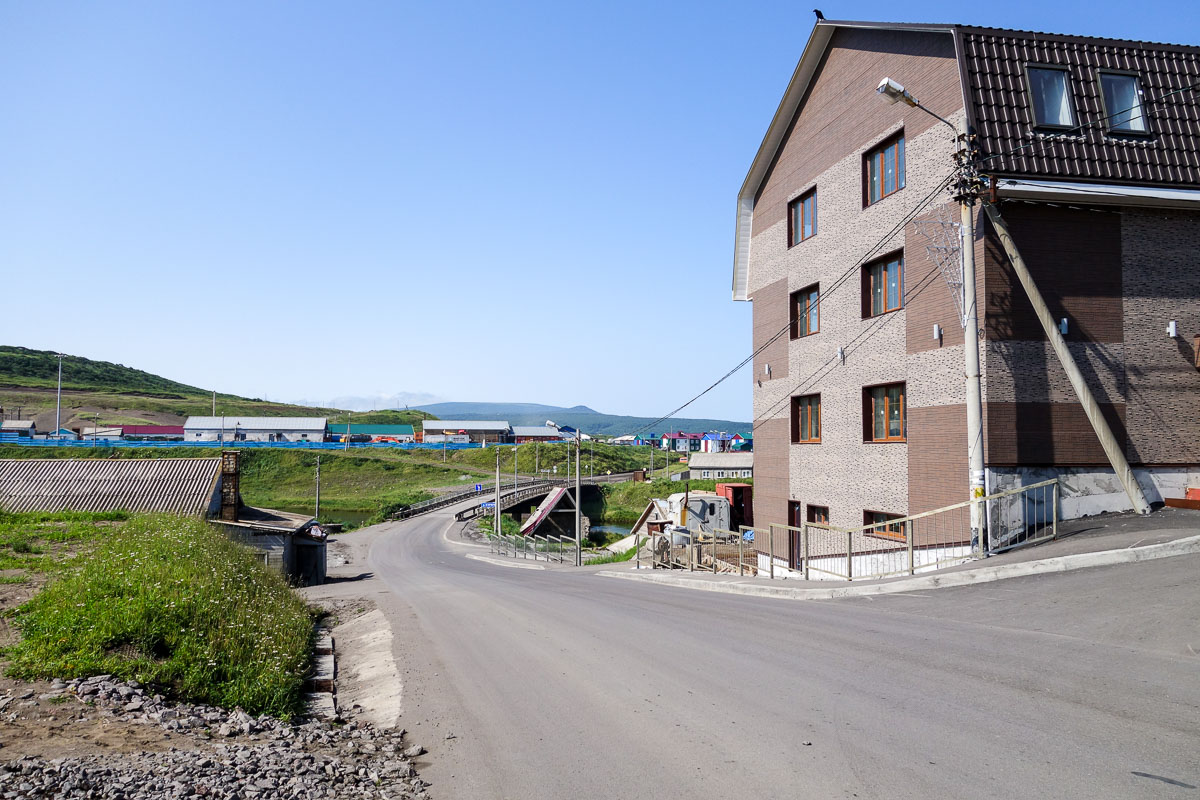 Lilyhammer kerbs? no – Kurilsk kerbs
Lilyhammer kerbs? no – Kurilsk kerbs
Turns out the small island has two airports – for ~7500 inhabitants! I reckon that’s a world record. Iturup International Airport opened just last month.
Like in Severo-Kurilsk, in Kurilsk we also didn’t have long to do much tourism stuff. After a dip in some hot waterfalls, it was back onto the Athens to set sail for our next island, Shikotan – i.e., a little further in the direction of our next Kurilsk – Yuzhno-Kurilsk…
Town 3: Yuzhno-Kurilsk, Kunashir island.
The only inhabited Kuril on which we were delayed more than one night was Kunashir – in Yuzhno-Kurilsk. Though, as mentioned, Yuzhno-Kurilsk doesn’t have the official status of town – it’s still clearly the de facto capital of the islands. There’s that Kuril logic again!
Like the other principal isles, the population lives mostly off fishing, plus there are plenty of customs officers and border guards – and a military base. Other folks you may get to find here are tourists – only very occasionally: a few thousand a year come. The locals say that’s plenty. Any more and there’d be a crush: all the local natural places of interest are fit only for small groups!
Building renovations continued as a theme here, as did freshly laid new roads. Boom town again: They’re building a geothermal power station, a new Orthodox church has been built, and new housing estates are almost completed. But it’s still very traditional and rustic in other ways – cows can sometimes be seen grazing in the town itself, much like in rural India :).
We were intending having dinner in a restaurant in the center we’d seen earlier in the day. But when we got there we were told that it’s really an after-dinner kinda place – after-dinner meaning no dinner, just lots of booze, so… “please, if you wouldn’t mind… kindly… sling your hook!”, or words to similar effedct. They sure value custom here, we thought!
It was a blessing in disguise however: the café in our hotel turned out to be a real gem of a gastronomical find. Both nights we were served there all kinds of interesting local fresh seafood dishes: scallops the size of your palm, similarly massive shrimp and crabs… not to mention the several kilos of caviar.
What else can I tell you about the town?
Overall, it can be said it’s less harsh down here in the south compared with it’s somewhat more extreme cousin-towns further north along the isles. The cars aren’t only off-roaders, the roads themselves are really good, and life seems calmer here and less threatening – more civilized even. Maybe it’s all just down to the less severe climate? Could well be. Everyday life sure is physically and spiritually more comfortable.
And that’s it for Kuril towns – for there ain’t no more!
Now you know a bit about what to expect in Kuril towns should you ever get over to this remote part of the world, which I heartily recommend you do :).
Later folks!
Still not been to the Kurils? @e_kaspersky tells all you need to know about their three main ‘towns’Tweet
